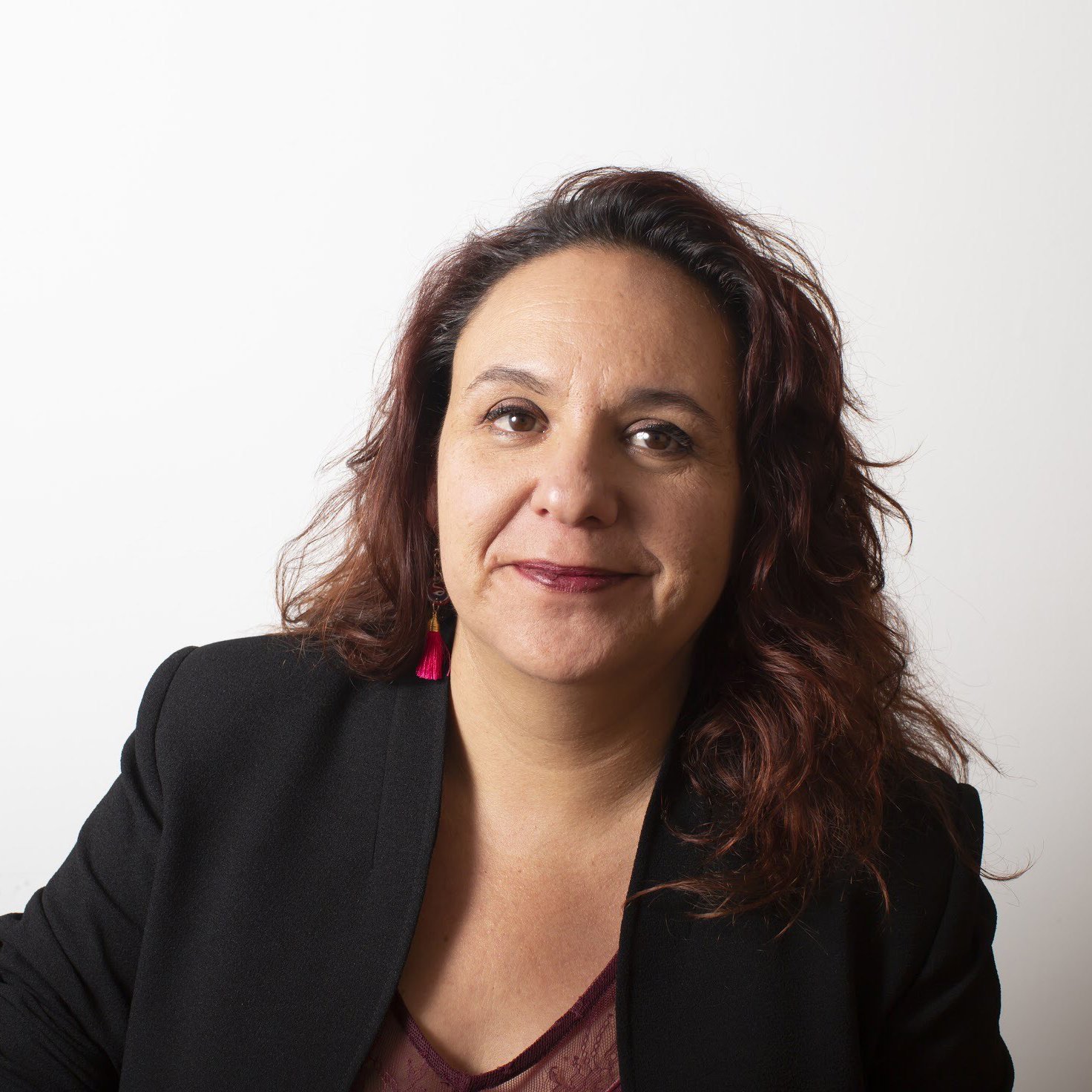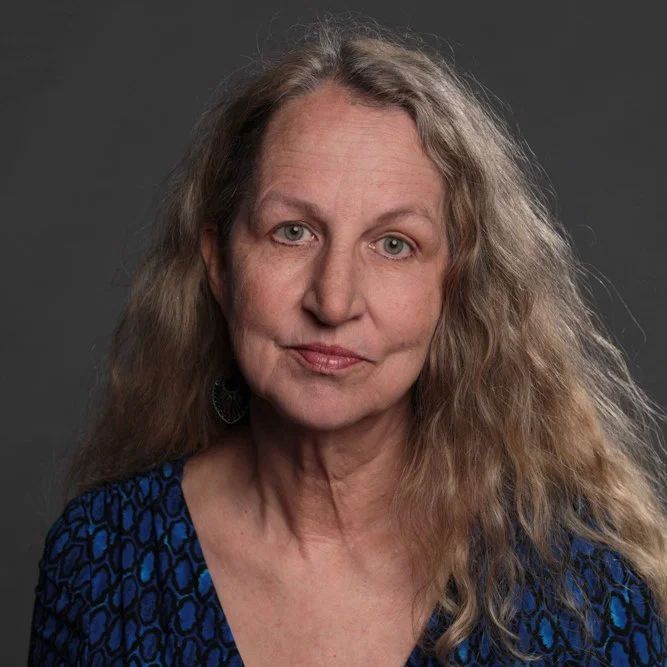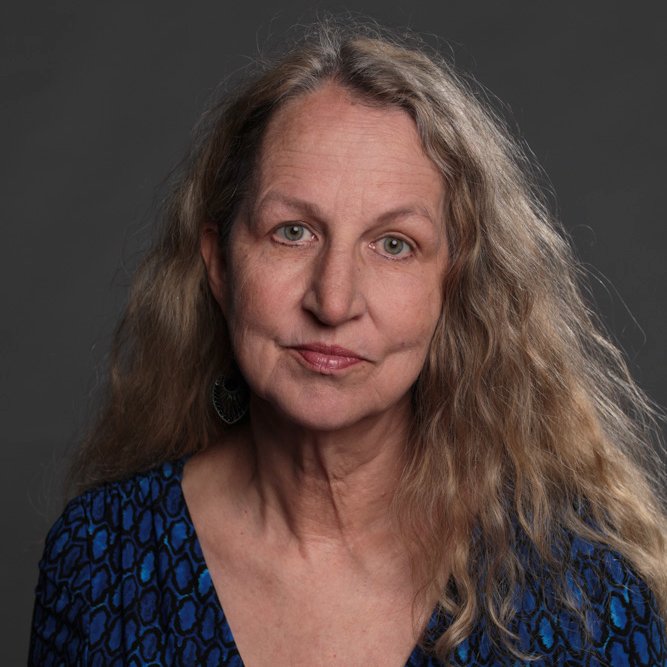The Last Stop
Art by Queso Rayones
A Mexican journalist’s new book takes readers on a disturbing trip that reveals how organized criminals routinely targeted and killed travelers bound for the Texas border — with almost total impunity
Editor’s note: Marcela Turati, one of Mexico’s finest investigative journalists, a winner of the Maria Moors Cabot Prize, and cofounder of the investigative nonprofit Quinto Elemento Lab, has spent more than a dozen years documenting the stories of Mexico’s disappeared and of its more than 2,000 narcofosas, a shocking series of recently-discovered hidden graves. Her first encounter with one of the most notorious mass graves came in 2011 at a crossroads called San Fernando, a picturesque community known, among other things, for its shrimp cocktail.
Turati revealed that many people buried under unmarked mounds in San Fernando, (and in narcofosas elsewhere), held uncounted victims of a drug war that raged in the states along the Texas border under the six-year-term of President Felipe Calderón, which ended on November 30, 2012. That militaristic federal government crackdown and related prosecutions of so-called cartel kingpins were largely funded by the United States through the so-called Merida Initiative and prompted widespread turf battles between organized crime groups, including a particularly brutal conflict between Gulf Cartel and their former violent partners, the Zetas.
Turati learned that the many people killed and secretly buried in the narcofosas had little or nothing to do with the drug trade. She found families, befriended forensic experts, and unearthed tales of people, some of whom had headed toward the Texas border to buy a new part for a mechanic workshop, to visit family, or to cross into the United States to work or to shop.
Many made the same terrible mistake: stopping in the town of San Fernando.
San Fernando: Última Parada by Marcela Turati
Copyright 2023 Marcela Turati. Published by Aguilar, Penguin Random House Grupo Editorial.
The following excerpt, translated for the Texas Observer by Lise Olsen is being reprinted with permission from Random House and from Turati. Read the full prologue en español.
Haga clic aquí para leer el prólogo en español.
My soul abandoned me in Matamoros, where the northeast corner of Mexico meets the limits of Texas. I am almost sure that it remained there, held hostage inside the state of Tamaulipas, where I had just encountered recently discovered clandestine graves.
In the days after that assignment, in April 2011, I felt a sensation of weightlessness, as if abandoned by gravity. I noticed it in the newsroom of Proceso magazine, where I worked then; after a colleague asked me about my trip to the border to document an unprecedented tragedy linked to Mexico’s “War on Drugs;’ I remember fleeing that question, my gaze fixed on nothing. Only later in the shade of a tree in the patio, did I begin trying to make sense of what I had seen. There were no words.
Until at last, an incomprehensible response emerged:
–My soul stayed there, as a hostage. It has not returned.
Sitting at my computer keyboard, I attempted to unlock everything I had stored up; I sought to exorcize all I had touched in that assignment, including the most difficult moment: in the morgue in Matamoros I had just seen a pile of bodies that had been disinterred from dozens of recently-discovered graves. Those decomposing corpses sat on the floor, packed into thick black plastic bags like those used for trash, sealed up with cinnamon-colored tape. The stench of death had been unbearable.
Art by Queso Rayones
When I left Matamoros the death toll had reached 145; the final total admitted by the government would rise to 193. And that count included only the bodies that the government had been unable to hide.
Even in my newsroom in Mexico City, I was still haunted by the images of the unending procession of grieving families who had arrived from all over the country after hearing news of the find. I noticed astounding internal strength in the pleas they made to functionaries in order to be allowed to see whether any of these bodies was the son who never arrived home; a sister for whom a ransom had been paid but who never returned; the father of whom there was no news; the brothers who failed to answer their cell phones, the mother who had been taken, (lifted as we say in Spanish — levantada.) And yet, at the same time, they all prayed to God that none of these bags contained the loved one for whom they still searched.
The terrible news dribbled out, one detail more cruel than another.
And the way the information was managed by the government only made the wait more tortuous.
I was there in the moment when experts unpacked that mountain of sacks of the dead and bundled them all into a tractor-trailer bound for the country’s capital, Mexico City. Behind the scenes, the official governmental order had been issued to erase these bodies from public view. So that no more families would arrive. So that no more journalists would come to cover this story. So that the news of this terrible scene would not scare off the usual Easter Week tourists.
I learned later, only after much time had passed, that after arriving at this new destination, the federal government then reburied these same bodies in yet another mass grave, this time inside a municipal cemetery in Mexico City.
With time, I was able to prove that the political decisions made on that day regarding the destination of those particular bodies, and more that followed, condemned many of these families of the disappeared to a kind of torture, a limbo of unknowing, that continues 12 years later.
Art by Queso Rayones
The atrocity that I went to cover in Tamaulipas became known in Mexico as “el hallazgo de las narcofosas de San Fernando,” (which translates roughly as “The discovery of the narcograves of San Fernando”). They were also called “The bus massacres,” and in forensic and bureaucratic jargon, “The San Fernando 2.”
That number 2 was a reminder of an earlier shocking discovery in the same small municipality, where only eight months prior, at the end of August of 2010, 72 migrants, 14 of them women, had been assassinated. San Fernando had already been forever linked to the images of those 72 corpses that lay inert, one leaning against another, all fallen onto the earthen floor of an abandoned store, crowded together inside the space where they had been forced up against concrete walls; blindfolded, with their hands tied, and dispatched with a bullet to the head. To this atrocity, which had also happened during the 6-year-term of Mexican President Felipe Calderón, authorities had given the name San Fernando 1.
And yet, though the name of the municipality was the same, the horror unearthed in the mass graves in April 2011 was quite different. These were not murder victims found lying on the ground altogether, a relatively common scene in those violent years, but instead, dozens of mounds of earth that hid the bodies of many people who had been killed at different times and — as I would later come to know — in different massacres that occurred over a span of months. Or years.
Gradually, as the discovery became transformed into a national scandal, we began to learn that the toll of these hidden assassinations had fallen most heavily on men and boys, nearly all young and poor. Soon we would learn that the victims were not only Mexicans but Central Americans, many of whom had been traveling in buses along the major highways that connect Mexico to the U.S. border until the moment that they had been forced to descend from the vehicles that had been carrying them. And always in San Fernando, this small crossroads city that is often a required waystation for passengers en route to Reynosa or Matamoros.
Art by Queso Rayones
It turned out that many buses on this route had arrived at terminals in those large cities on the U.S.-Mexico border without passengers but stuffed with suitcases. The storage areas in the local bus station had been piling up with those unclaimed bags. But the abandoned bags’ owners never returned to San Fernando to reclaim them. And the companies that ran those bus routes had kept quiet.
As indignation over these revelations began to increase, Mexican authorities attempted to claim that all of these deaths had occurred over only three or four days and had targeted passengers aboard a small number of buses. And that the perpetrators were all members of the notorious criminal group known as Los Zetas.
But the exhumed corpses themselves soon began to reveal other versions of reality…
Marcela Turati is a journalist who specializes in human rights and is co-founder of the Quinto Elemento Lab, a laboratory for journalistic research and innovation established in 2016, and the network “Periodistas de a Pie” (Journalists on the Move) created in 2006.
She is the author of the book "Fuego cruzado: las víctimas atrapadas en la guerra del narco" (Crossfire: The Victims Trapped in the War on Drugs”) (Grijalbo, 2010) and has coordinated various collaborative projects such as the website #Másde72 (#MoreThan72), focusing on the massacres of migrants in Tamaulipas.
Since 2018, she has directed the portal "A dónde van los desaparecidos," (Where the Missing Go), through which she promotes the training of journalists to cover these issues.
She has collectively coordinated award-winning investigations such as "El país de las 2 mil fosas" (The Country of 2,000 Graves) and "Crisis forense” (Forensic Crisis).”
Marcela Turati has received international awards, including the Lifetime Achievement Award from the Gabo Foundation, the Louis M. Lyons Award for Conscience and Integrity in Journalism from the Nieman Foundation at Harvard University, and the Maria Moors Cabot Prize from Columbia University. In Mexico, she has received additional awards, including the 2023 Javier Valdez Cárdenas Journalism Award from Penguin Random House-Aguilar to write her latest book.
After she investigated the mass graves in San Fernando, Tamaulipas, she became a subject of spying by the Mexican government, through its use of the Pegasus spyware.
Lise Olsen is the senior editor for investigations at the Texas Observer and the author of Code of Silence: Sexual Misconduct by Federal Judges, the Secret System that Protects Them and the Women who Blew the Whistle (Beacon Press 9/2021) and of The Scientist and the Serial Killer (Random House: expected 1/2025). She has known Marcela Turati since the 1990s when she served as executive director of the nonprofit Investigative Reporters and Editors's Mexico project.










